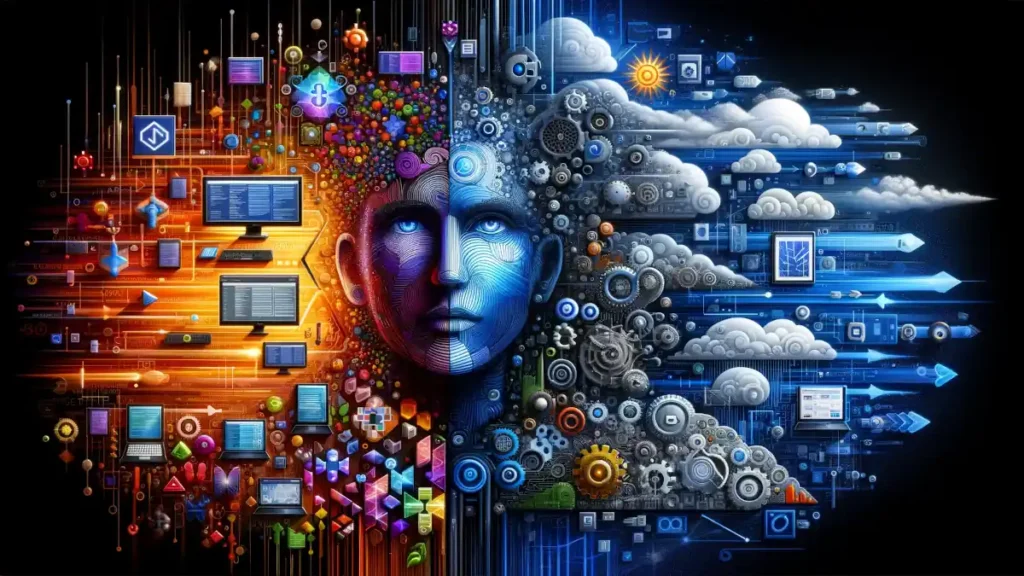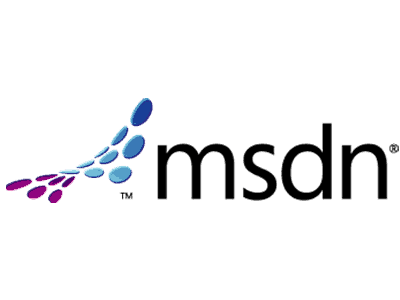For decades, the Microsoft Developer Network (MSDN) stood as a beacon for developers navigating the vast and evolving landscape of Microsoft technologies. MSDN was more than just a resource; it was a community and a comprehensive library that provided tools, documentation, and support essential for developers, from budding programmers to seasoned software engineers.
This article will explore the legacy of MSDN, delving into its role as a crucial resource in the development of Windows-based software. We’ll uncover the reasons behind its phase-out and how its spirit and functionalities have been succeeded by newer platforms in 2023. Join us in retracing the journey of MSDN and understanding its impact on the generations of tech enthusiasts who grew alongside Microsoft’s technological advancements.
Table of Contents:
- The Inception and Role of MSDN
- MSDN’s Impact on Developers and Microsoft Technologies
- Key Resources and Services Provided by MSDN
- The Evolution of MSDN Over the Years
- The Transition: From MSDN to Modern Alternatives
- Current Resources Replacing MSDN in 2023
- Legacy and Lasting Impact of MSDN on the Developer Community
- Conclusion

1. The Inception and Role of MSDN
The Microsoft Developer Network (MSDN) was inaugurated by Microsoft in the early 1990s, marking a pivotal moment in the tech world. Its inception was driven by a clear vision: to provide a centralized resource for developers working on Microsoft technologies. MSDN emerged as a comprehensive repository of tools, documentation, sample code, and forums, tailored to meet the needs of developers at various skill levels.
Centralizing Resources for Developers
Initially, MSDN focused on consolidating an array of programming resources. Before its launch, developers often struggled to find reliable and comprehensive information on Microsoft technologies. MSDN addressed this by offering a one-stop hub, ensuring easy and streamlined access to vital development resources.
Facilitating Learning and Innovation
MSDN played a crucial role in educating developers. It offered extensive documentation and tutorials, which were instrumental for both novice and experienced programmers. This educational aspect was not just about imparting knowledge; it was about nurturing innovation and skill development, enabling developers to effectively leverage Microsoft’s platforms and tools.

Community and Support
Beyond resources, MSDN fostered a vibrant community. Developers could engage with peers, seek advice, and share insights. Microsoft also used MSDN to offer direct support, bridging the gap between the company and its developer base. This community aspect of MSDN helped cultivate a network of professionals united by their interest in Microsoft technologies.
In summary, the inception of MSDN was a game-changer, offering an integrated suite of resources and community support that significantly eased and enriched the development experience on Microsoft platforms.
2. MSDN’s Impact on Developers and Microsoft Technologies
MSDN had a profound impact on both developers and the evolution of Microsoft technologies. Its influence extended beyond mere resource provision, shaping the way software was developed and contributing to the growth of the Microsoft ecosystem.
Empowering Developers
MSDN empowered developers by providing them with the knowledge and tools necessary to harness Microsoft technologies effectively. This empowerment led to the creation of diverse and innovative software applications on Windows, which further popularized Microsoft’s operating system and development platforms.
Shaping Software Development
By offering detailed documentation and best practices, MSDN played a crucial role in standardizing software development processes. Developers could follow guidelines and utilize established methodologies, leading to more robust and reliable software. This standardization was pivotal in maintaining quality and consistency across applications built on Microsoft platforms.
See also: 10 Skills You Need to Be a Developer!
Driving Technological Advancements
MSDN also served as a feedback loop for Microsoft. The interaction with the developer community provided Microsoft with valuable insights into user needs and preferences, influencing the development of new technologies and updates. This feedback was essential for Microsoft to stay ahead in the rapidly changing tech landscape.
Cultivating a Developer Ecosystem
Lastly, the community aspect of MSDN nurtured a strong developer ecosystem. This network was not just about solving technical issues; it was about sharing ideas, innovations, and fostering a sense of belonging among those working with Microsoft technologies.
In essence, MSDN’s impact was multifaceted – it was a catalyst for individual developer growth, a standard-bearer for software development practices, a driver for Microsoft’s technological evolution, and a builder of a vibrant developer community.
3. Key Resources and Services Provided by MSDN
MSDN stood out as an invaluable resource for developers, offering a wide array of tools and services that were crucial for software development and learning.
Comprehensive Documentation
At the heart of MSDN was its exhaustive documentation. Covering everything from basic tutorials to advanced programming concepts, these documents were essential for developers to understand and implement Microsoft technologies effectively.
Software and Tools
MSDN provided access to various Microsoft software and development tools, often ahead of their general release. This access allowed developers to experiment with, and adapt to, new technologies and updates quickly.
Code Samples and Libraries
The network was a treasure trove of code samples and libraries. These resources saved developers considerable time, providing them with ready-to-use code snippets and frameworks that could be integrated into their projects.
Forums and Community Support
MSDN hosted forums and community support channels where developers could seek advice, troubleshoot issues, and share knowledge. This peer-to-peer support system was integral to solving complex problems and fostering collaborative learning.
Technical Support and Training
In addition to community-driven support, MSDN offered direct technical support from Microsoft. It also provided training resources, including webinars and tutorials, to help developers stay updated and enhance their skills.
See also: Programming Languages 101.
4. The Evolution of MSDN Over the Years
MSDN’s journey mirrors the evolution of the software development landscape, adapting and expanding to meet the changing needs of developers.
Early Years
Initially, MSDN focused on providing documentation and software tools. As Microsoft’s technology portfolio grew, so did MSDN’s resources, encompassing a wider range of development tools and technologies.
Expansion and Integration
Over time, MSDN integrated more interactive and dynamic resources, such as forums and online communities. This shift facilitated greater collaboration and knowledge sharing among developers.
Digital Transformation
With the advent of the internet, MSDN transitioned from a primarily physical media-based service (like DVDs) to an online-centric model. This transition allowed for more timely updates and easier access to resources.
Adapting to New Technologies
As Microsoft ventured into new territories like cloud computing and mobile applications, MSDN evolved to include resources and tools relevant to these domains, ensuring developers had the necessary support to navigate these emerging technologies.
The Shift to Modern Platforms
In recent years, MSDN began to merge its functionalities with more modern, streamlined platforms. This shift was in response to the changing dynamics of software development, where speed, agility, and integration became key.
The evolution of MSDN reflects Microsoft’s commitment to supporting its developer community, constantly adapting to provide the most relevant and effective resources in the face of ever-changing technological landscapes.
5. The Transition: From MSDN to Modern Alternatives
The transition from MSDN to modern alternatives marks a significant shift in Microsoft’s approach to developer resources and community engagement. This change was driven by the evolving needs of the developer community and advancements in technology.
Embracing a More Integrated Approach
Microsoft began to integrate MSDN’s features into more comprehensive and modern platforms. This integration aimed to provide a more unified and streamlined experience for developers, aligning with contemporary development practices and tools.
Transition to Online Platforms
The move towards online platforms facilitated immediate access to resources and community support. This shift was crucial in an era where rapid development and continuous integration/continuous deployment (CI/CD) became the norm.
Focus on Cloud and Mobile Technologies
As the industry gravitated towards cloud computing and mobile app development, Microsoft’s new platforms started to emphasize these areas, ensuring that developers had the latest tools and knowledge at their disposal.
6. Current Resources Replacing MSDN in 2023
In 2023, several resources and platforms have taken up the mantle of MSDN, providing modernized tools and support for developers.
Microsoft Docs
Microsoft Docs is the primary resource for documentation, replacing traditional MSDN libraries. It offers comprehensive guides, tutorials, and API references for all Microsoft technologies.
Microsoft Learn
Microsoft Learn serves as an educational platform, providing free, interactive learning paths for various Microsoft technologies and role-based certifications.
GitHub and Azure DevOps
For software collaboration and version control, Microsoft emphasizes GitHub and Azure DevOps. These platforms integrate source control, project management, and CI/CD pipelines.
Visual Studio and Visual Studio Code
These Integrated Development Environments (IDEs) offer advanced coding tools, debugging capabilities, and extensions for a wide range of programming languages and frameworks. Go to the Visual Studio Website.
Microsoft Developer Centers
For specialized development areas like AI, IoT, and quantum computing, Microsoft has established dedicated developer centers, offering specialized resources and community support.
7. Legacy and Lasting Impact of MSDN on the Developer Community
MSDN’s legacy extends far beyond its physical resources. It fostered a generation of developers and significantly impacted the software development landscape.
Cultivating a Skilled Developer Base
MSDN played a critical role in educating and nurturing developers, many of whom went on to create groundbreaking software and technologies.
Standardizing Development Practices
MSDN’s extensive documentation and best practices helped standardize software development, contributing to higher quality and more reliable software across the industry.
Building a Collaborative Community
The community aspect of MSDN laid the groundwork for a culture of collaboration and knowledge sharing among developers, which continues in today’s online platforms.
Influencing Microsoft’s Evolution
The feedback and engagement through MSDN influenced Microsoft’s product development, making it more aligned with the needs and challenges of developers.
8. Conclusion
The story of MSDN is one of innovation, community, and transformation. As we witness the transition to modern platforms, the essence of MSDN lives on – in the comprehensive resources of Microsoft Docs, the interactive learning experiences of Microsoft Learn, and the collaborative environments of GitHub and Azure DevOps. MSDN’s legacy is evident in the thriving global community of developers, the standardization of development practices, and the continuous evolution of Microsoft’s technologies. As we look back at MSDN’s journey, it stands as a testament to Microsoft’s enduring commitment to supporting and empowering its developer community.